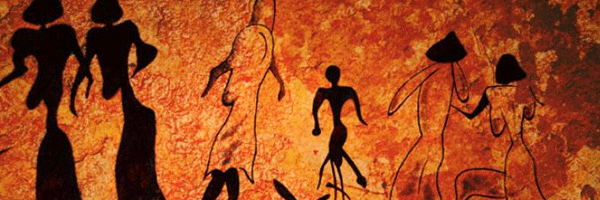Varnashram – Anthropology Notes – For W.B.C.S. Examination.
বর্ণাশ্রম – নৃবিদ্যা নোট – WBCS পরীক্ষা।
(a) Varna System:
The later Vedic society came to be divided into four varnas called the Brahmanas, Kshatriyas, Vaishyas and Sudras. The growing cult of sacrifices enormously added to the power of the brahmanas.Continue Reading Varnashram – Anthropology Notes – For W.B.C.S. Examination.
In the beginning the Brahmanas were only one of the sixteen classes of priests, but they gradually overshadowed the other priestly groups and emerged as the most important class. They conducted rituals and sacrifices for their clients and for themselves.
They prayed for success of their patron in war and in return the king pledged not to do any harm to them. The second class of Kshatriyas had the supremacy in temporal affairs as the Brahmanas had in spiritual matters. There was an increase in the privileges of these two higher classes at the cost of the two lower classes (vaishyas and sudras).
The Vaishyas constituted the common people, and they were assigned to do agriculture, cattle-breeding etc. Some of them were also artisans. Towards the end of the Vedic period they began to engage in trade. The Vaishyas appear to be the only tribute-payers in later Vedic times, and the Kshatriyas are represented as living on the tributes collected from the Vaishyas.
All these three higher Varnas shared one common feature they were entitled to Upanayana or investiture with the sacred thread according to the Vedic mantras. The fourth Varna, Sudra, was deprived of the sacred thread ceremony and with this began the imposition of disabilities on the Sudras.
Change of caste though very unusual, was not as yet impossible. The higher castes could intermarry with the lower ones, but marriage with Sudras was not approved. The idea of pollution by touch finds expression. Sudras were denied the right to perform sacrifices.
The ranks of Sudras were constantly swelled by the admission of new aboriginal tribes into the Aryan polity. There were still no prohibitions against inter-dining and the caste system had not acquired the rigidity it did in the period of the Sutras.
Outside the regular castes stood two important bodies of men, namely, the Vratyas and the Nishadas. The Vratyas were probably Aryans outside the pale of Brahmanism. The Nishadas were clearly a non-Aryan people who lived in their own villages and had their own rulers (Sthapati). They were probably identical with the modern Bhils.
(b) Ashramas:
Ashramas or four stages of life were not well established in Vedic times. The earliest-clear reference to the four Ashramas – that of Brahmachari or student, Grihastha or householder, Vanaprastha or hermit and Sanyasi or ascetic, is found in the Jabala Upanishad. The Chandogya Upanishad clearly refers to the first three Ashramas. Full recognition of the fourth stage was done only in the post-vedic period.
The later Samhitas refer to the Upanayana, and its description in the Satapatha Brahmana shows that it possessed all essential features of the sacrament (samskara) elaborately treated in the Grihya Sutras. It was confined to Brahmins, kshatriyas and vaishyas; the sudras were not entitled to Upanayana.
In Vedic times, girls were also sometimes initiated. Since the rite was considered as equal to accomplishing a second birth, members of the three higher varnas were described by the epithet dvija (twice- born). Education used to begin with this Samskara.
Throughout the Vedic period, education was imparted orally-and was mainly based on Srutiand Smriti. The list of subjects for study shows a wide range of knowledge embracing not only Vedas, Itihasa, Puranas and grammar, but also astronomy, military science, dialetics, and knowledge of portents. Development of character constituted the aim and mortal training, the backbone of the educational system.
Our own publications are available at our webstore (click here).
For Guidance of WBCS (Exe.) Etc. Preliminary , Main Exam and Interview, Study Mat, Mock Test, Guided by WBCS Gr A Officers , Online and Classroom, Call 9674493673, or mail us at – mailus@wbcsmadeeasy.in
Visit our you tube channel WBCSMadeEasy™ You tube Channel
Please subscribe here to get all future updates on this post/page/category/website



 Toll Free 1800 572 9282
Toll Free 1800 572 9282  mailus@wbcsmadeeasy.in
mailus@wbcsmadeeasy.in


















































































































